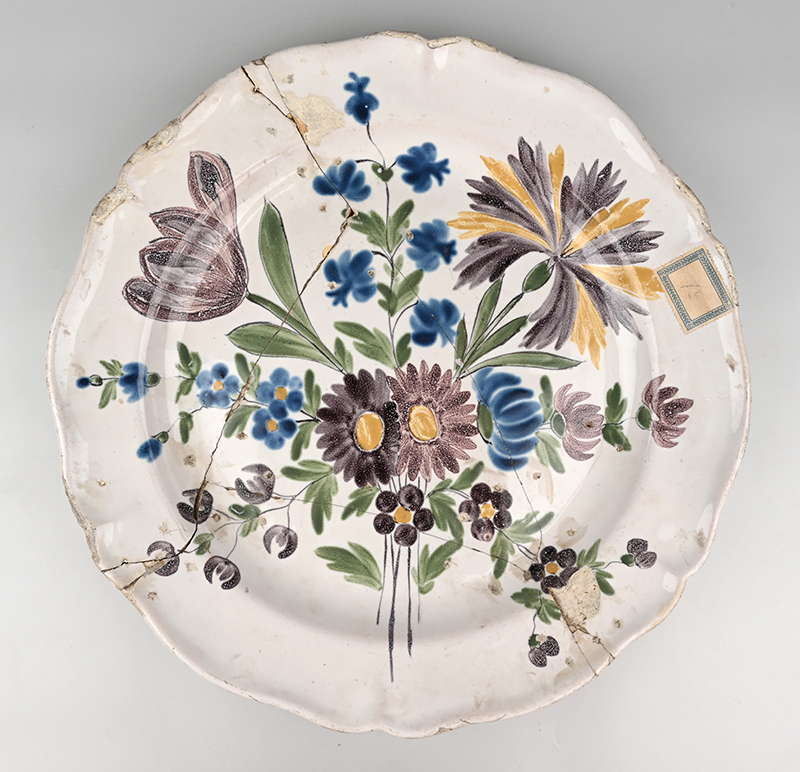
Pottery from the Nägeli manufactory in Kilchberg-Schooren in CERAMICA CH
Roland Blaettler, Andreas Heege 2019
In 1792, Matthias Neeracher bought the old faience and porcelain factory in the Schooren area of Kilchberg and proceeded to produce refined white earthenware and faience. In 1802 the manufactory changed ownership and Hans Jakob Nägeli took over the running of it. He handed it down to his son, Johann Jakob Nägeli, in 1830. The refined white earthenware production probably ceased as early as 1804. In 1849, Johann Jakob Nägeli closed down the business because it was no longer viable. This was followed by a transition period under Louise Nägeli (1849–1858). She eventually sold the factory to Johann Jakob Staub, who ran it until his death in 1897. In 1907, Staub’s heirs closed down the factory. In 1919 the company buildings were converted into a country residence, which was blown up without permission in 2002 (Matter 2012, 14–17).
Faience from Kilchberg and Rüschlikon
It is still quite difficult to distinguish between the products from the four manufactories on Lake Zurich, particularly with regard to the basic shapes, which were rather simple and almost identical. The more complex shapes of the tureens, on the other hand, have formal details that allow us to attribute them to the individual factories. Rudolf Schnyder’s definitions for the typical shapes from the two main manufactories, Nägeli (HMO 8689; AF No. 28) and Scheller, (AF No. 25; AF No. 73; HMO 8149), are very convincing (Schnyder 1990).
Nägeli:
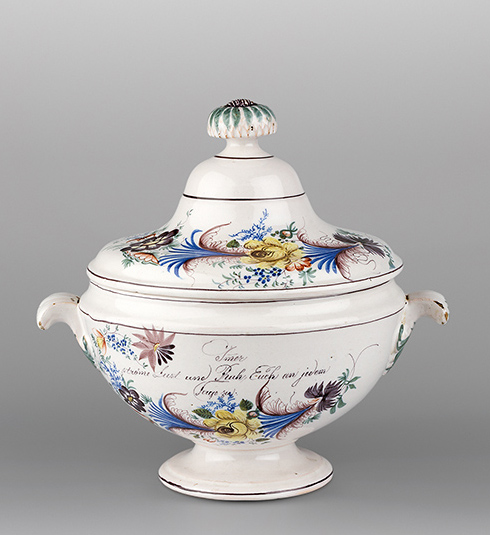
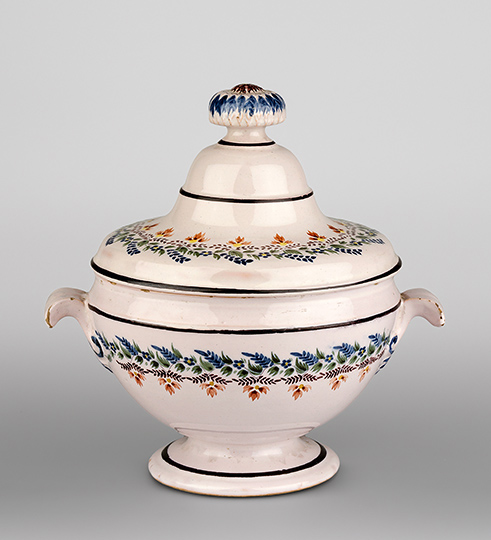
Scheller:
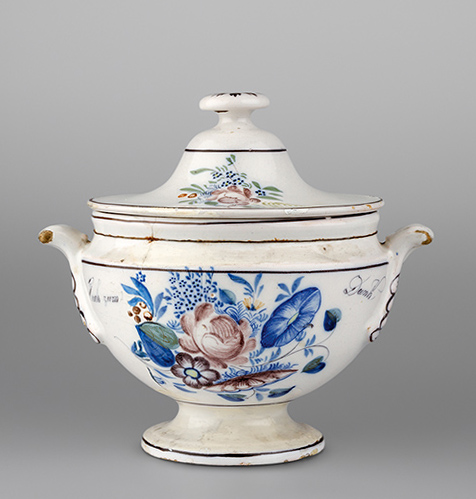
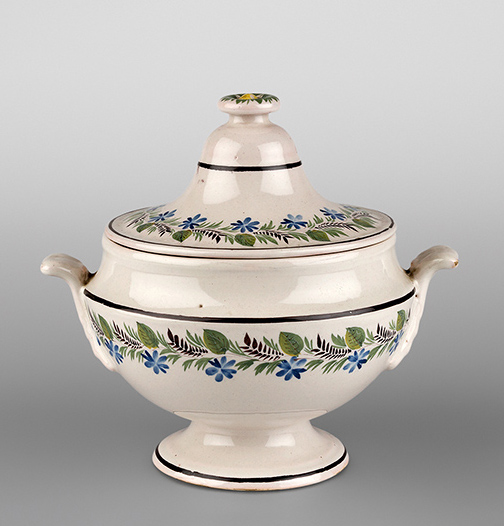
While this preliminary distinction using formal criteria allows us to compare the decorations on the products of the two rival companies, we cannot be entirely certain about which company produced each individual type. The difficulty arises because we know that the painters moved from one company to the other, and Schnyder also pointed out that some shapes could even have been made by Fehr or Abegg in Rüschlikon, though their products are more rarely found, and attributions are still largely hypothetical (KMM 225; MBS 1944.93; HMO 8141; SFM 113; SFM 111; SFM 112; AF Nr. 74).
We have refrained from offering comparisons and in-depth studies on the faience products from Kilchberg and Rüschlikon. The only vessels that we have attributed to a particular producer are the ones where it seems obvious which factory they originated from, but we have also added the Rüschlikon makers proposed by Rudolf Schnyder. The label “Kilchberg” has been used for pieces that were made either by Nägeli in the Schooren area or by Scheller in the Böndler area before he also moved his company to the Schooren area in 1835. The label “Kilchberg-Schooren”, on the other hand, has been used for objects made by Nägeli or by Scheller after 1835. It is indeed possible that some of the faience pieces that we have attributed to “Kilchberg” or to “Kilchberg-Schooren” will turn out to have been made in Rüschlikon at some time in the future.
Translation Sandy Haemmerle
References:
Blaettler/Schnyder 2014
Roland Blaettler/Rudolf Schnyder, CERAMICA CH II: Solothurn (Nationales Inventar der Keramik in den öffentlichen Sammlungen der Schweiz (1500–1950), Sulgen 2014, 42–43.
Ducret 2021
Peter Ducret, Seltene Dekore auf Fayencen der Manufaktur Nägeli in Kilchberg, in: Keramik-Freunde der Schweiz, Revue 136, 2021, 51-82.
Matter 2012
Annamaria Matter, Die archäologische Untersuchung in der ehemaligen Porzellanmanufaktur Kilchberg-Schooren. Keramikproduktion am linken Zürichseeufer 1763–1906 (Monographien der Kantonsarchäologie Zürich 43), Zürich 2012.
Schnyder 1990
Rudolf Schnyder, Schweizer Biedermeier-Fayencen, Schooren und Matzendorf. Sammlung Gubi Leemann, Bern 1990.

